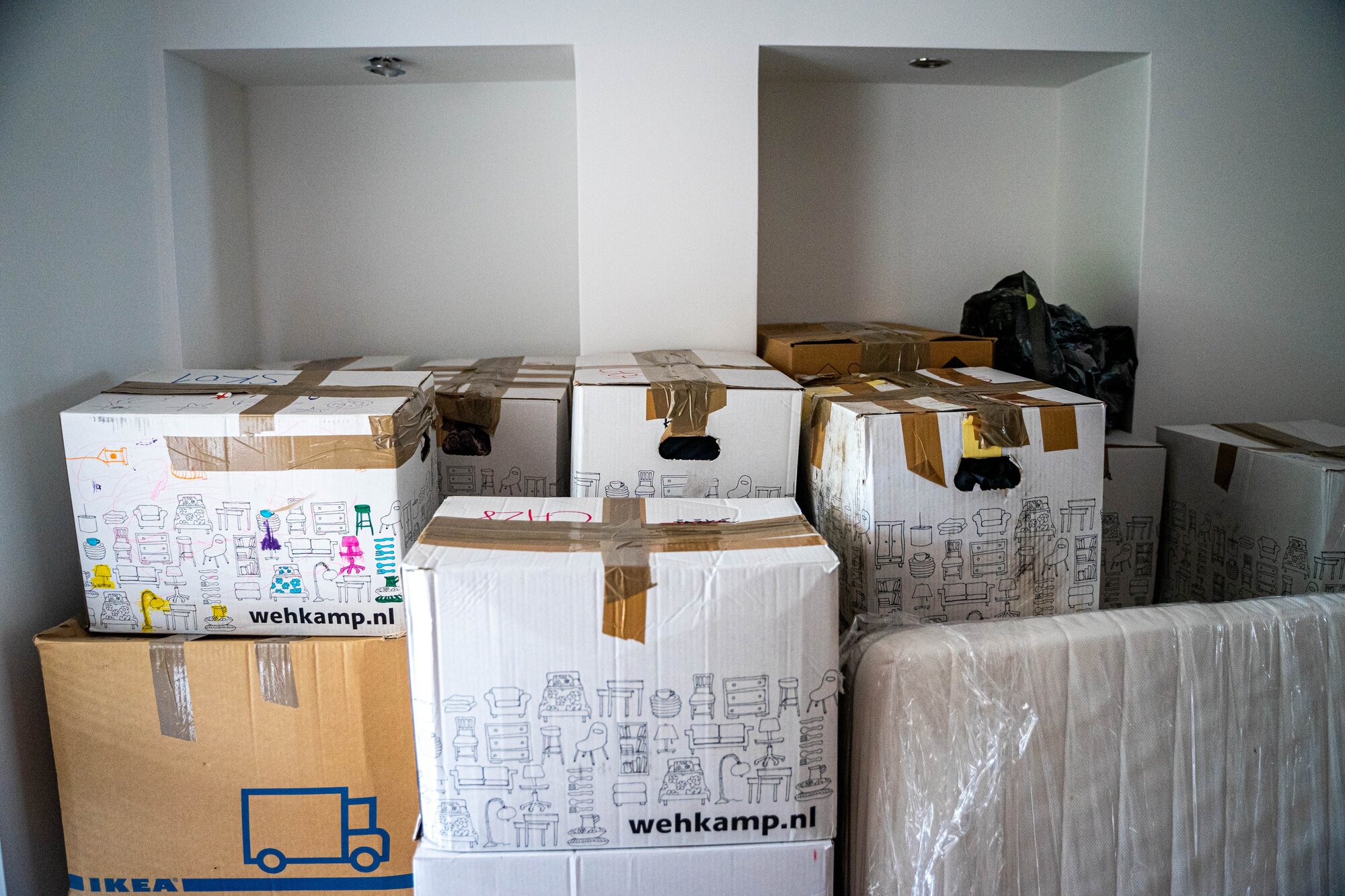How to pack for self storage requires some planning and organisation to ensure that your belongings are safe and secure. Here are some steps to follow when packing for self storage:
- Declutter and organise: Before you start packing, go through all your belongings and get rid of anything you no longer need or use. Organise the remaining items into categories such as clothing, kitchenware, electronics, etc.
- Gather packing materials: You will need boxes, packing tape, bubble wrap, packing peanuts, and other materials to keep your items safe during transportation and storage.
- Label your boxes: Label each box with a description of its contents and mark fragile items as fragile. This will help you find things easily when you need them and avoid damage to fragile items.
- Disassemble large items: If you have furniture or large items, disassemble them before packing to save space and make them easier to transport. Keep all screws and bolts in a labeled bag so you can easily reassemble them when needed.
- Protect your items: Use bubble wrap, packing peanuts, or other materials to protect your items from damage during transportation and storage. Wrap fragile items individually to prevent them from breaking.
- Fill boxes completely: Fill each box to the top to prevent it from collapsing or being crushed by other boxes. If a box isn’t completely full, add packing material to fill any empty space.
- Stack boxes carefully: When stacking boxes in your storage unit, place heavier boxes at the bottom and lighter ones on top. Leave some space between boxes to allow for air circulation.
- Create an inventory list: Make a list of all the items you are storing and keep it in a safe place. This will help you remember what you have in storage and where it is located.

Creating an inventory list for self storage
An inventory list for self storage can help you keep track of your belongings and ensure that everything is accounted for when you need it. Here are some tips for creating an inventory list:
- Use a spreadsheet: A spreadsheet is an easy and efficient way to create an inventory list. You can use software like Microsoft Excel or Google Sheets to create a table where you can list all your items, along with their description, quantity, and location in your storage unit.
- Categorise your items: Organise your items by category, such as clothing, furniture, electronics, etc. This will help you find what you’re looking for quickly and easily.
- Take photos: Take photos of each item and include them in your inventory list. This can help you identify items that may be difficult to describe in writing, and also serves as a visual record in case of loss or damage.
- Label your boxes: Label each box with a number or a name that corresponds to your inventory list. This will help you easily identify what’s in each box and locate items when you need them.
- Update your list regularly: As you add or remove items from your storage unit, make sure to update your inventory list. This will help you keep track of what you have in storage and avoid confusion or misplacement of items.
Looking for more information on storage unit sizes and cost?
Categorising your self storage items
Categorising your items is an important step in preparing to put items into self storage. It can help you stay organised, make it easier to access your items when you need them, and protect your items during transportation and storage. Here are some tips on how to categorise your items for self storage:
- Seasonal items: Items that you only use during certain times of the year, such as holiday decorations, summer sports equipment, or winter clothes, can be packed together in their own boxes and labeled clearly.
- Furniture: Large furniture items such as couches, beds, and dining room tables should be disassembled if possible, and stored with any hardware and screws in labeled bags. Cover furniture with blankets or plastic covers to protect them from dust and scratches.
- Electronics: Label and pack electronics such as TVs, DVD players, and game consoles with their corresponding cables and accessories. Wrap them in bubble wrap or packing paper to protect them during transportation and storage.
- Clothing and linens: Store clothes and linens in vacuum-sealed bags or plastic bins to save space and protect them from moisture and pests. Label the containers with the contents and location in your storage unit.
- Books and papers: Store books and papers in labeled boxes, and stack them on sturdy shelves to avoid damage. Make sure to pack them tightly so they don’t shift during transportation.
- Fragile items: Wrap fragile items such as glassware, mirrors, and artwork in bubble wrap or packing paper, and label them as fragile. Pack them tightly in boxes with plenty of cushioning material to prevent damage.
Storing Electronic items
When storing electronic items in self-storage, here are some important things to consider:
- Climate Control: Electronic items are sensitive to temperature and humidity fluctuations, which can cause damage. It’s best to choose a storage unit with climate control to keep the temperature and humidity levels stable.
- Protection from Dust: Electronic items can attract dust, which can damage the delicate components. Make sure to pack electronic items properly and cover them with dust covers or plastic sheeting.
- Security: Electronic items are valuable and can be targets for theft. Choose a self-storage facility with good security measures such as surveillance cameras, gated access, and security personnel.
- Power Source: It’s important to remove batteries from electronic devices before storing them. If the items require electricity, consider using a climate-controlled unit with an electrical outlet or battery-powered storage.
- Labeling and Organization: Keep electronic items organized and labeled to make it easier to find them when needed. Use sturdy boxes or containers to store them, and stack them carefully to avoid damage.
- Insurance: Consider getting insurance to protect electronic items in case of damage or theft. Many self-storage facilities offer insurance, but you may also want to check with your homeowner’s or renter’s insurance provider.
- Regular Inspection: Check on your stored electronic items periodically to ensure they are still in good condition. It’s also a good idea to test them out to make sure they still work properly.
For businesses who need a serviced office click here


